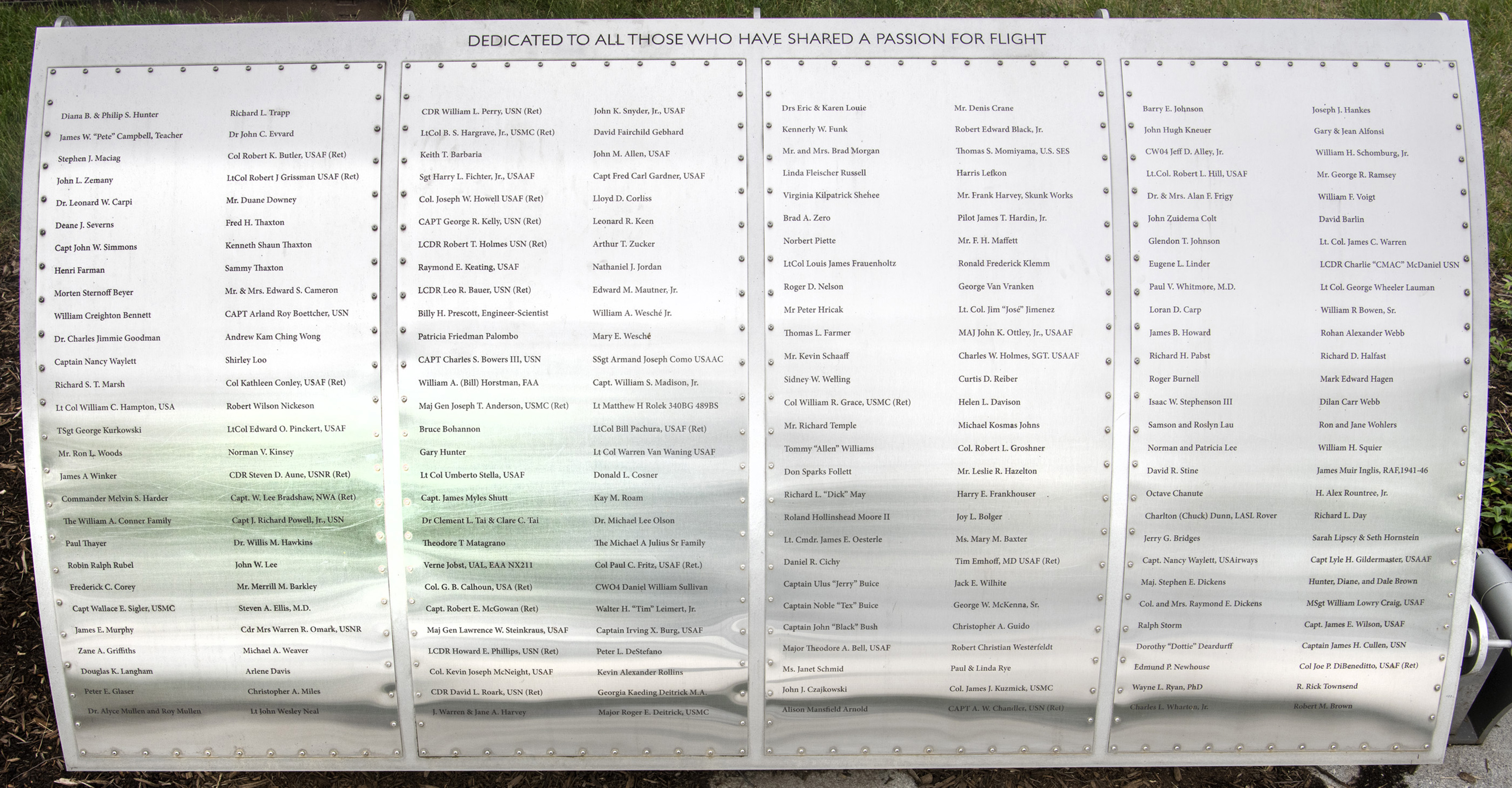
Foil: 22 Panel: 4 Column: 1 Line: 19
Wall of Honor Level: Air and Space Sponsor
Honored by:
Mr. Dunn worked at the Propulsion Center of North American Aviation, developing large liquid rocket engines for the Army's Redstone and Jupiter missiles, the Air Force's Thor and Atlas missiles, and NASA's Saturn I and Saturn V launch vehicles.
In 1956, he was assigned to the Los Alamos Scientific Laboratory (LASL) on the National Nuclear Rocket Program, Rover. He performed thermal and stress analyses on the KIWI A reactor, and coordinated activities on graphite materials testing.
With completion of KIWI A design, he returned to Rocketdyne to perform nuclear rocket design studies, and preliminary design on the First High Flow (10,000 gallons per minute) Liquid Hydrogen (LH2) Pump (Mark 9).
In 1958, LASL requested Mr. Dunn's support during test of KIWI A at the Nevada Test Site (NTS]. He was Core Structural Monitor and Vibration Task Force Group Leader.
With completion of KIWI A testing at NTS in 1959, he returned to Rocketdyne as Project Engineer on Mark 9 LH2 Pump Development. The Mark 9 was successfully tested in the Fall of 1960.
When NASA learned of the Mark 9, Rocketdyne was immediately supported to develop a Liquid Oxygen/LH2, rocket engine (based on the Mark 9 pump design) to be used on the second and third stages of Saturn V. The result was Rocketdyne's J-2. Five J-2's were used on the second stage and one J-2 was used on the third stage of Saturn V. Use of LH2 fuel on Saturn V meant that it could deliver the complete vehicle for the Apollo Mission to Low Earth Orbit (LEO). Otherwise, with Fossil Fuel for these two stages, two Saturn V launches would be required with assembly of the payloads in LEO. This would have stretched the Apollo program in time and cost due primarily to LEO facility and operational requirements.
For the Rover Program, the Mark 9 meant saving in facilities and operations in Area 400 at NTS for testing higher power reactors for longer duration, requiring vastly more Hydrogen Propellant. The KIWI A reactors were tested with hydrogen gas and the rocket nozzle was cooled with water. So the reactor test facilities in Area 400 were modified for use of Mark 9 and large LH2 storage Dewars were added. New higher power (up to 5,000 megawatt) reactor test facilities were built using up to two - 1 million gallon LH2 Dewars. The Mark 9 was advanced with higher performance blading, larger duplex ball-bearings, and a Five-stage Hydrogen Turbine powered the pump. The turbopump, designated the Mark 25, was used in testing the Phoebus I (1,500 Megawatt) and Phoebus 2 (5,000 Megawatt) reactors for tests lasting up to one hour.
The Phoebus IB test (in 1967) article (Reactor Pressure Vessel and LH2 Cooled Rocket Nozzle) is in the Atomic Testing Museum (A Smithsonian Affiliate) in Las Vegas on the Grounds of UNLV. For the Phoebus IB Test, the equivalent engine thrust for a High Expansion Nozzle in space was 77,000 pounds, with a Specific Impulse of 800 seconds.
The technology for a Nuclear Rocket Engine was developed and demonstrated under the Rover Program. The main requirement for the Nuclear Rocket Engine is a Manned Mars Mission.
•Graduated BSME, California Institute of Technology
•Graduate Studies in Applied Mechanics, Dynamics and Space Technology-USC and UCLA
•Graduate Studies in Nuclear Physics and Critical Assembly Experiments-Los Alamos Scientific Laboratory
•16 Papers Related to:
Nuclear Rocket Engines
Liquid Hydrogen Pumps and Systems
Liquid Hydrogen Cooled Nozzles
Large Liquid Sodium Pumps for Advanced Nuclear Power Plants •9 Patents Related to:
The Above 4 Areas
High Energy Laser Optics •Senior member, American Rocket Society •Committee Member for Formation of the AIAA •American Institute of Aeronautics and Astronautics (AIAA)
Associate Fellow
Member, Nuclear Propulsion Committee
Member, Wyld Propulsion Award Committee •Member, ASME Nuclear Pump Committee •Affiliate Member, Smithsonian Institute •Sustaining Member, Nevada Test Site Historical Foundation and Atomic Testing Museum.
Wall of Honor profiles are provided by the honoree or the donor who added their name to the Wall of Honor. The Museum cannot validate all facts contained in the profiles.
Foil: 22
